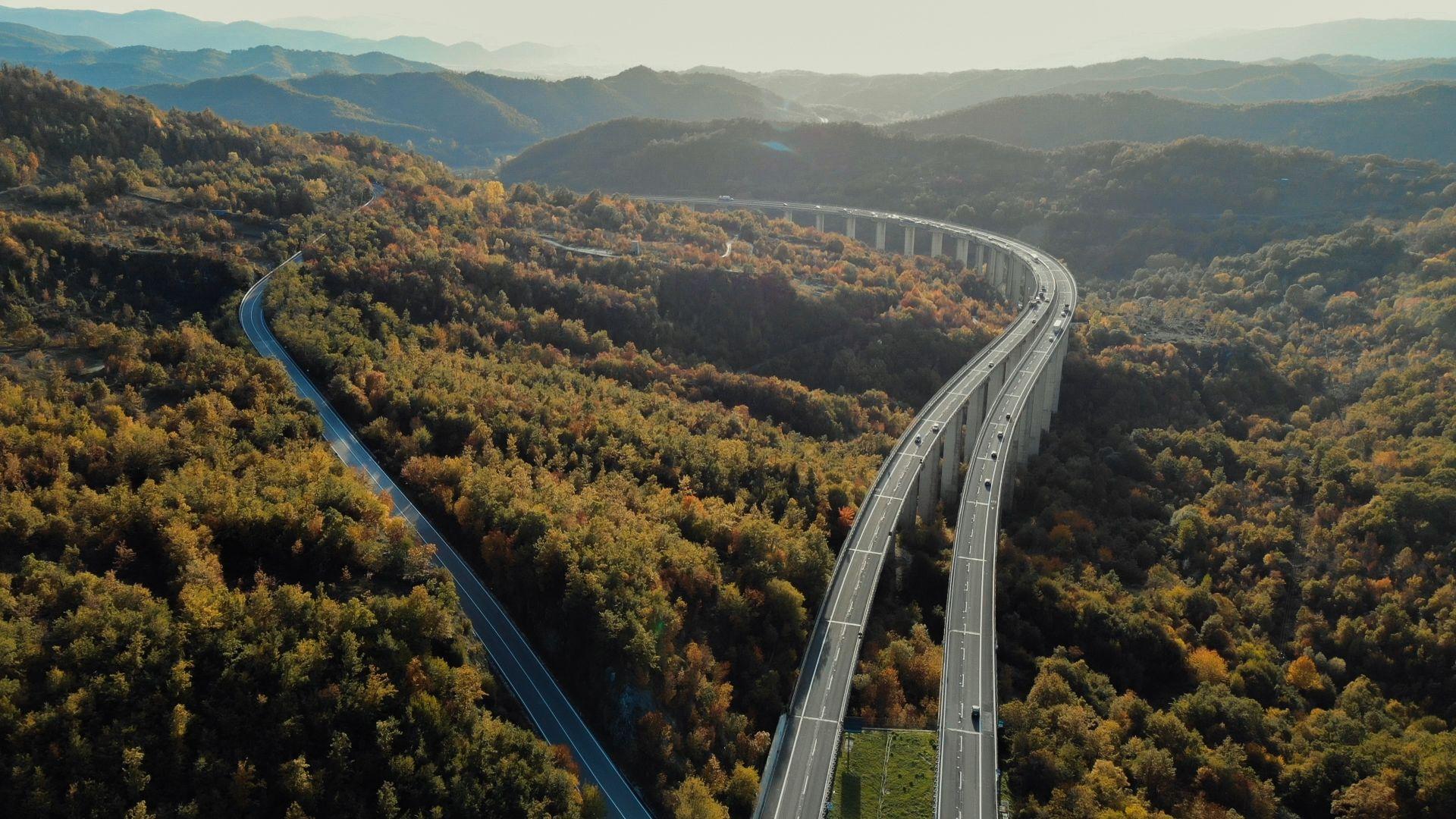· 4 min read
Roads, and their integrity, are fundamental for world economic growth. They are considered the lifeblood of our economic and social progress, from the daily commute to work to short, relaxing weekend getaways, to the smooth transport of goods worldwide.
To put it in context, a few facts suffice: according to the European Commission, 81% of passengers in Europe and 77% of inland freight were transported by road in 2020, the highest for a decade. Ireland (99%), Greece (97%) and Spain (96%) were at the top of the list.
The not-so-bright side of this is the ageing and upgrading of the road infrastructure. Most of Europe’s road network was built between the 1960s and 1970s, and its design envisaged a useful life of 50 years. Consequently, significant effort is needed to maintain and monitor their condition to avoid the repercussions of an outdated system. This is not limited to an increase in accidents affecting public safety, but also threatens the welfare of road workers and increases air pollution.
Pavements and surfaces in poor condition led to increases of up to 34% in vehicle fuel consumption, which translate into higher CO2 emissions. In contrast, implementing planned maintenance measures on the Old Continent’s road network could reduce emissions by 5% by 2035, as the European Automobile Manufacturers Association states in Highways News.
However, given that current inspection systems are still very labour-intensive, it is clear that we need to improve the way we examine and plan road maintenance.
I’ve always been fascinated by technology and how it improves society by addressing challenges, especially those associated with railways and road infrastructures.
I live in Málaga, which has a complicated transit system because you drive between the sea and the mountains, and you usually have only one way to get from one point to another. When maintenance takes place, chaos reigns. I’m convinced the only possible strategy to reduce these inconveniences is through innovative technologies.
As a research and development engineer, I specialise in creating next-generation monitoring technologies and using data analytics and artificial intelligence to improve predictive maintenance methodologies and decision support tools for infrastructures.
When looking for a breakthrough in this field, Industry 4.0 – or the Fourth Industrial Revolution – provides us with a new vision for the future. Its implementation comprises efficient, fast, and reliable technologies already within reach and can provide intelligent solutions.
With its enabling technologies, we believe it can offer alternatives that meet the needs of the modern world.
Capturing the true value of Industry 4.0
A pilot project backed by the European Union is already testing this approach in OMICRON’s Intelligent Road Asset Management Platform. It brings together a wide variety of innovative technologies, such as digital inspection through unmanned aerial vehicle (UAV) imaging, dedicated ground vehicles, vehicle-to-infrastructure (V2I) communications, robotics, virtual and augmented reality tools, and machine learning. The main aim is to improve road condition state, from inspection and data management to maintenance execution.
From my perspective, one of the keys to managing all these technologies is to have a comprehensive structure, with professionals trained in each aspect. This will enable us to plan each step and promote teamwork and interaction. It is essential that each member feels happy to participate in the project and that collaboration flows to achieve our final objectives.
Creating a digital replica of the whole road infrastructure through a digital twin, a digital clone of the road network, is at the project’s core. This method of handling the substantial amounts of generated data then serves as a snapshot of the state of the infrastructure.
Within the project, a decision support system that works like a forecasting tool offers the features of a dashboard to analyse infrastructure condition. It facilitates monitoring tasks and makes it possible to discuss interventions and maintenance proactively with a significant impact on management.
A key addition to this analysis is to carry out repairs when they are most cost-effective to achieve greater optimisation of resources, lowering costs for all stakeholders.
Involving 16 partners from seven European countries, pilots will be launched in Spain, Portugal, and Italy.
The help of robotics and sensors, as leading technologies to improve how we execute predictive maintenance, is a key aspect of improving safety for workers.
Without a doubt, the most challenging aspect of this 21st century approach is to tackle the problem of road asset management holistically. This means integrating all these modern technologies – from inspection to data management and data use - into execution.
Aligned with the digitalisation and green transition needs of our era, the main goals of implementing these new technologies are clear: increasing safety in the whole road asset management cycle, reducing costs and fatalities, and ultimately, upgrading road network capacity.
We expect this new generation of roadwork techniques to be sustainable and safer, and to provide a better service to local and international users.
This article is part of an ongoing collaboration between Illuminem and ESCI, a science communication not-for-profit based in Germany helping EU funded research projects to communicate to the public.
Illuminem Voices is a democratic space presenting the thoughts and opinions of rising Sustainability & Energy writers, their opinions do not necessarily represent those of illuminem.






